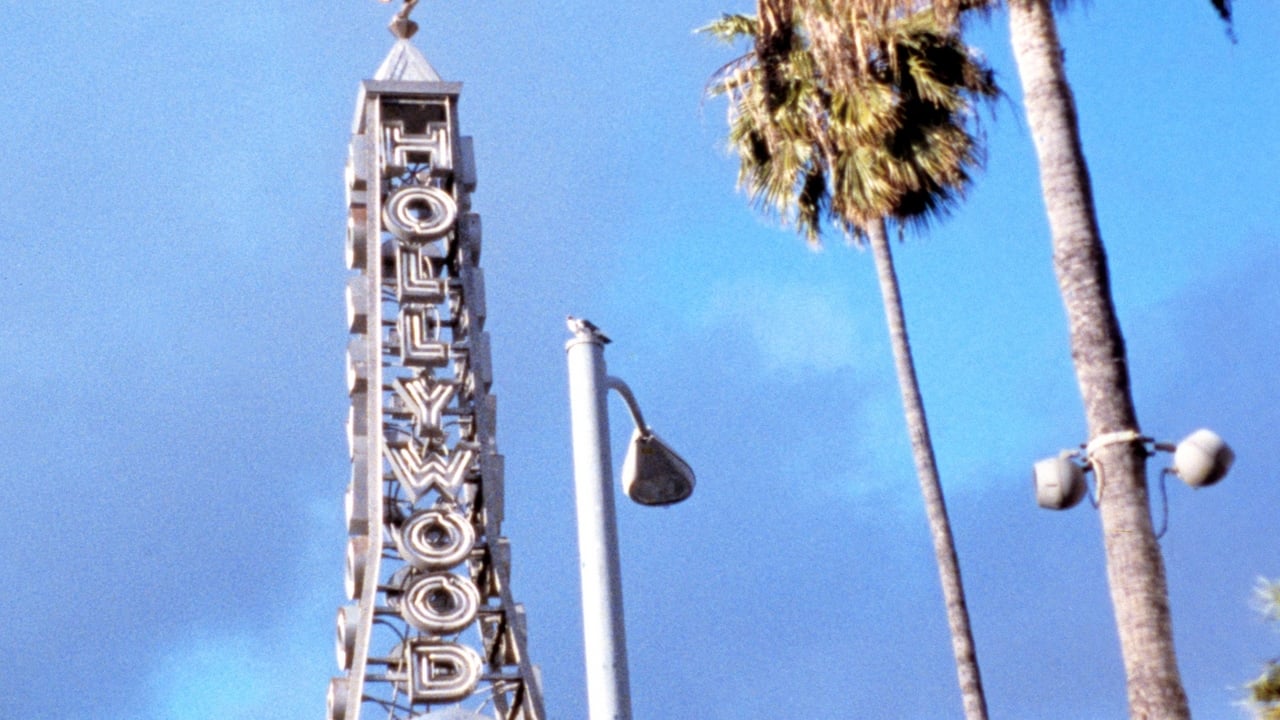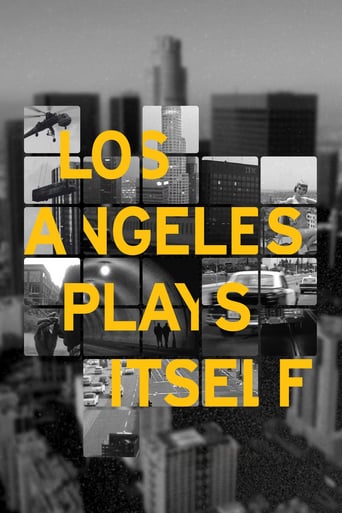

What should be a fun documentary, the history of movie shooting locations, turns into an almost three hour slog. The film is dragged down by a script full of banalities (did you know when a film's actors exit one location they don't always enter the real next location?) and the most monotonous monotoned (sic) difficult to listen to narrator since "The Story of Film: An Odyssey."Another flaw is the repeated scenes of B and even C level films. Occasionally this is works, but how many times can you watch something Messiah of Evil?Best watched in short bursts.
... View MoreThis is one of the most interesting projects about cinema (as the filmed frame) that I know of. It is about the city as background, as character and subject. They were making as far back as the 1920's films as hymns to the cityscape and what life in it, 'city symphonies' they called them, but here it is about the most photographed city in the world. A place that was nothing more than a small town when the dream factories rolled in and shaped it into a myth that sustains itself. And it's entirely in terms of cinematic history, entirely cobbled together from other peoples' vision of that place.So the essay is about the history of a city as reflected in cinema and shaped by it, about Hollywood's idea of Los Angeles overlapping with the actual place where real people live. The filmmaker has compiled clips from a large array of films; from silents and noir to 80's action and modern blockbusters. The idea is that we're looking at the background of these shots, at the actual reality and place over which is superimposed the movie fantasy.Various insights here, ranging from the stridently interprative to the intuitively discerning. It amuses the narrator for example, how modernist architectural houses built to signify transparence are turned by movies into the dens of iniquity of shady characters simply because they look weird from the outside. How the same building could substitute as a hotel, a police station, and a newspaper office depending on the movie. How the disappearance of entire neighborhoods can be actually traced in the footage of movies filmed there. Bunker Hill was a busy, homely district where pensioners and poor immigrants lived in the late 50's, but in '84 it substitutes well as a desolate urban wasteland in Night of the Comet.And a more interesting one. How cinema imagined in Chinatown or Who Framed Roger Rabbit, perhaps reflecting public opinion, devious schemes by shady groups of plutocrats to usurp control of the water or public transport, while the actual reality was banal; these things happened, or efforts towards them, but in the public eye and with its support.
... View MoreRemarkable documentary, charting the history of how Los Angeles is portrayed in the movies, using hundreds of clips from dozens of movies. In the process it reveals much about the city's real history, its politics, how movies distort and even create reality, etc, etc. Smart, and never for a second boring despite it's 2:49 running time, often funny, with Anderson's well written dead pan voice over constantly making you see both films and the city of Los Angeles in new ways. As noted in other reviews, this will probably never be commercially released due to the enormous expense and legal complexity of licensing all the clips involved. But very worth keeping your eye open for at museums, University showings, 'grey market' sales, etc.
... View MoreLos Angeles Plays Itself asks the question - should we expect films to represent the truth or is anything acceptable in the name of entertainment? Director Thom Andersen is mostly concerned about how his city, the City of Los Angeles, has been represented in the movies. In an abrasive and brilliant three-hour cinematic essay, he wants us to know that the history, locations, and social makeup of Los Angeles bears little resemblance to how it has been depicted on screen over the years. According to Andersen, "Los Angeles is where reality and representation get muddled," he says. The public conception of Los Angeles (he despises calling it LA) he says is of discontinuity, nonexistent addresses, phony telephone numbers, rich and corrupt individuals who live in modernist houses in the hills, and ethnic minorities who live next to oil refineries if they live at all.Containing clips from literally hundreds of films, Los Angeles Plays Itself is divided into three parts plus a very welcome intermission. Encke King narrates but the text is from Andersen, a Professor of Film Studies at the California Institute of the Arts and a resident of Los Angeles since age seven. The first part, The City as Background, looks at how real sites have been misleadingly portrayed in a cinematic history of buildings and houses turned into something far from their intended purpose. Using clips from such diverse films as The White Cliffs of Dover and DOA, he shows how the massive sky-lit Bradbury Building was turned into a British hospital, a Burmese hotel, and a police headquarters. In The City as Character, he shows the deterioration of the residential downtown area known as Bunker Hill that went from an upscale neighborhood to one of seedy rooming houses until it was finally leveled for redevelopment and commercial high rises.Accessible by a railcar known as Angel's Flight, Bunker Hill in the movies became a setting for adultery and murder in film noirs such as Kiss me Deadly and Double Indemnity and eventually a futuristic dreamscape in Blade Runner. These are contrasted with the documentary The Exiles by Kent Mackenzie that shows the reality of the cultural dislocation of a subculture of Arizona Indians living in loneliness on the hill. Andersen discusses landmarks that no longer exist such as the Pan Pacific Auditorium and laments the passing of the drive-in restaurant and drive-in movies. He has little good to say about films such as Altman's Short Cuts, Steve Martin's L.A. Story, and Woody Allen's Annie Hall that, he says, repeat tired clichés about his city. He also takes umbrage at films like War of the Worlds, Predator 2, and Independence Daythat blow his city to smithereens to satisfy the audience's need for destruction.The final part is called The City as Subject and here Andersen exposes the lies of films such as Chinatown and L.A. Confidential that tell only part of history, delving into the real scandals in L.A. history that reached far deeper than that shown in the movies. He even dissects good old Joe Friday in Dragnet, showing it as a TV series that mirrored the LAPDs contempt for the ordinary citizen. The essay ends with a look at some rare independent films that portray a part of ethnic Los Angeles overlooked in big studio productions. These are Bush Mama, Killer of Sheep, and Bless Their Little Hearts, a film about the tribulations of an aging unemployed black man in South Central Los Angeles.Los Angeles Plays Itself is a fascinating excursion into the history of cinema and Andersen's commentary is hard hitting, insightful, and revealing. He invites us to reawaken our senses and view movies consciously, not simply accept uncritically what is presented on the screen. Whether you agree or disagree with his point of view, I guarantee you will never look at films in quite the same way again.
... View More